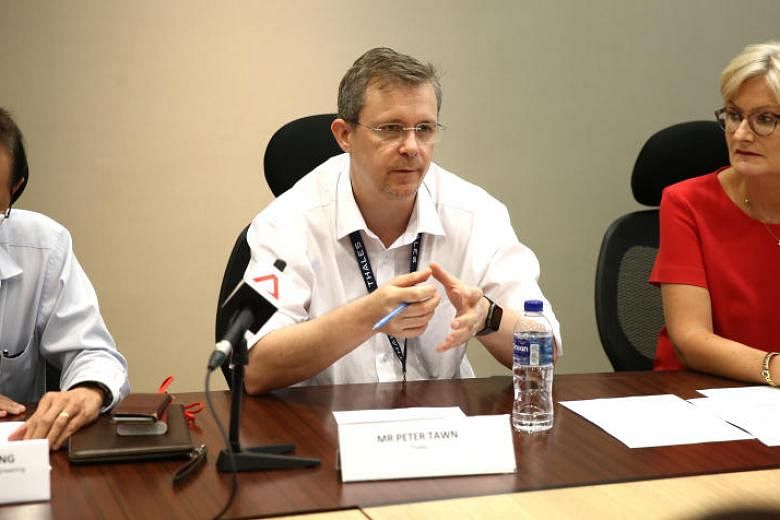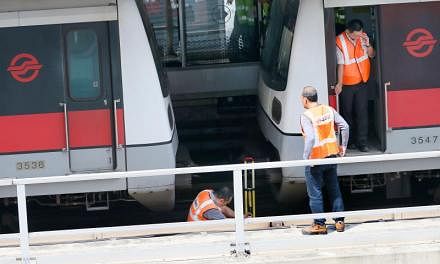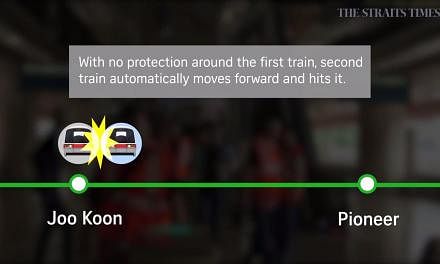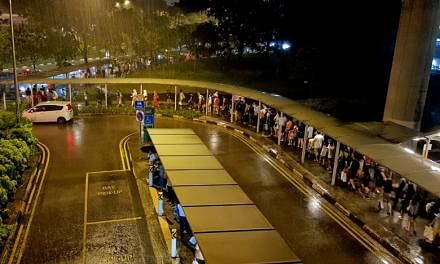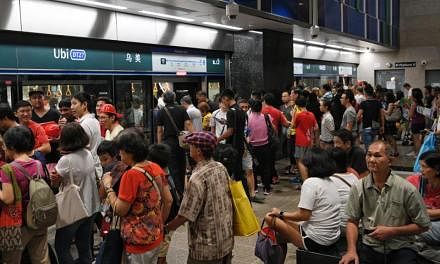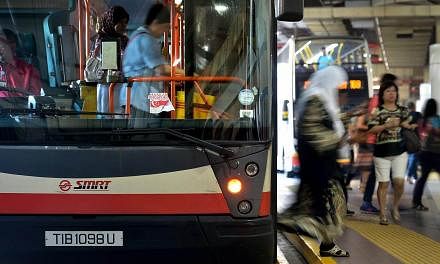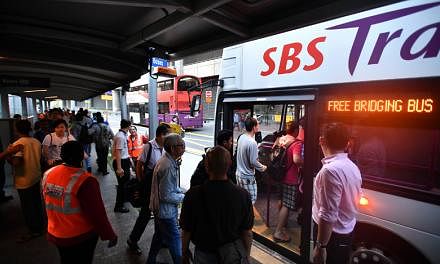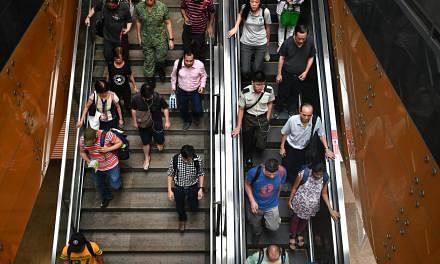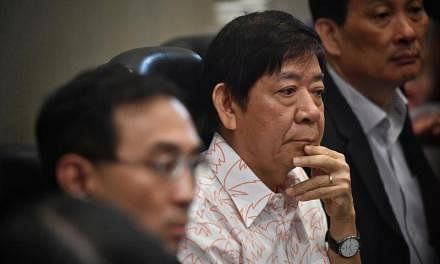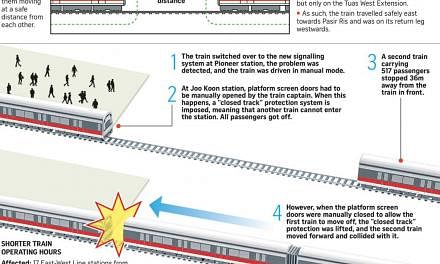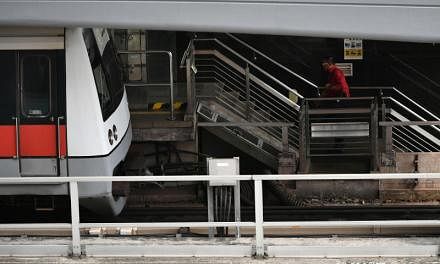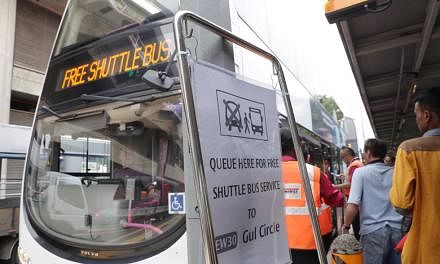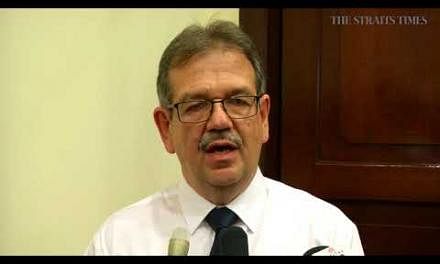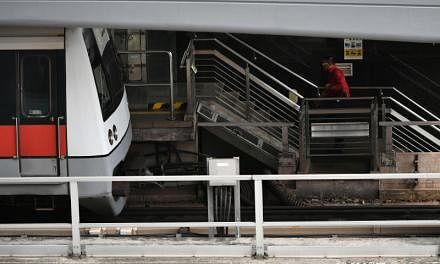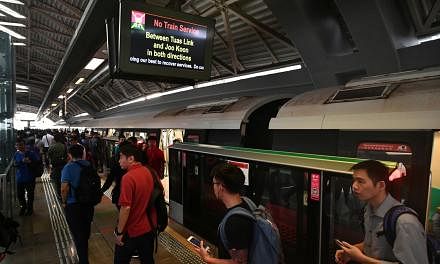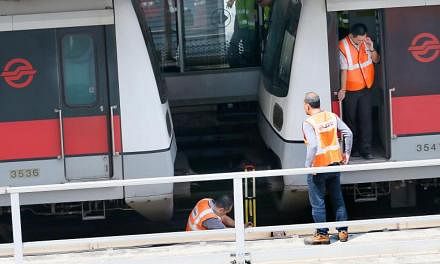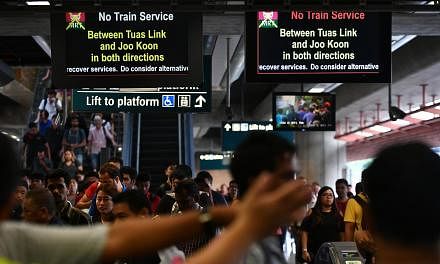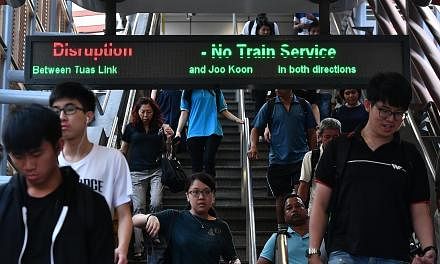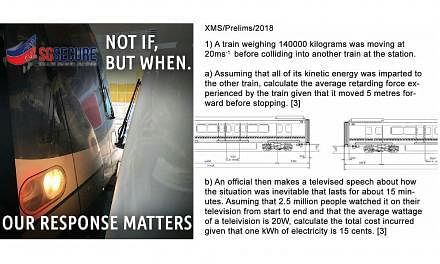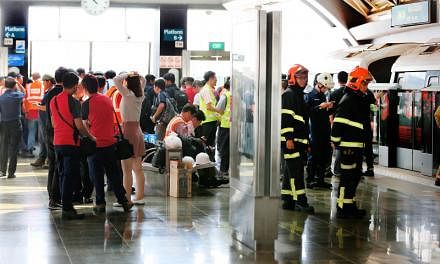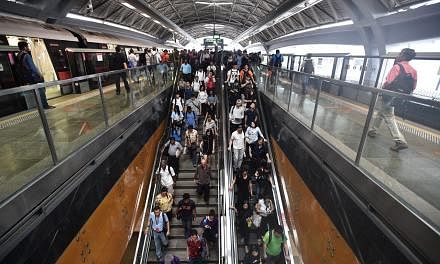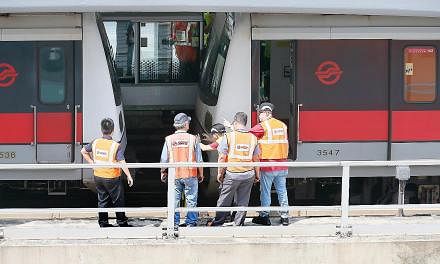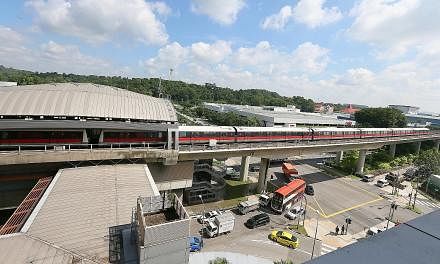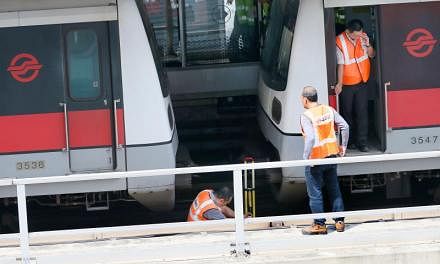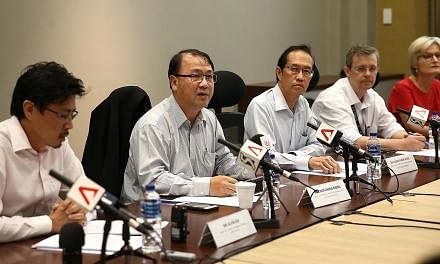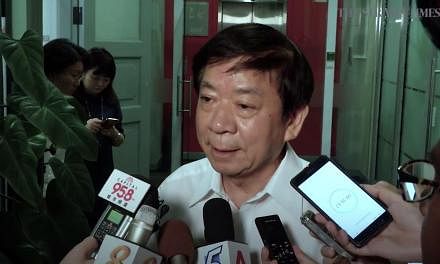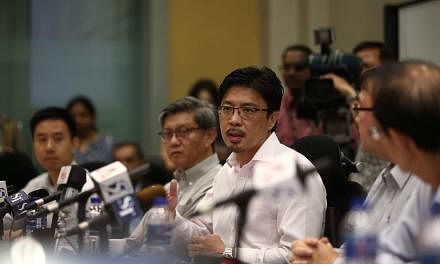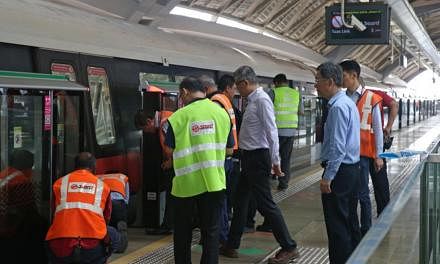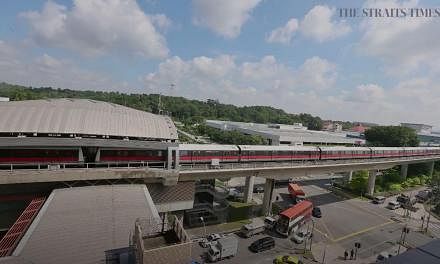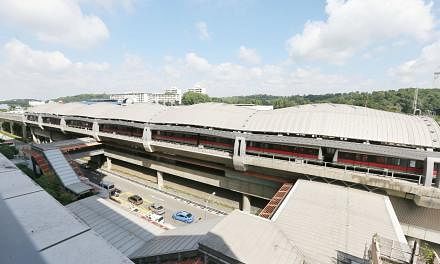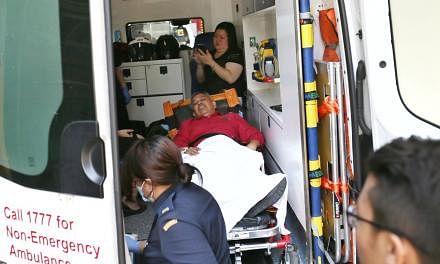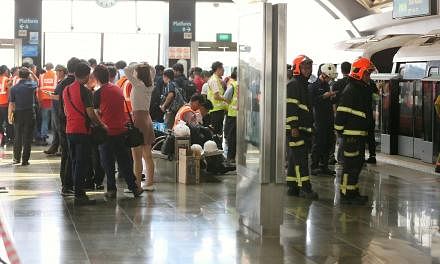SINGAPORE - French company Thales has taken "full responsibility" for its part in the Nov 15 train collision at Joo Koon MRT station.
It said an "unexpected" problem occurred in the interface between the old and new signalling systems of the East-West Line (EWL).
Thales, which is supplying the new system for the EWL, has also apologised to commuters who were inconvenienced, and the 38 people injured by the accident.
Mr Millar Crawford, executive vice president for ground transportation systems with Thales, assured commuters that its communications-based train control (CBTC) system is "safe and secure for operations".
He was speaking on Tuesday (Nov 21) at a press conference with SMRT and the Land Transport Authority (LTA).
The same system - which allows trains to run closer together and arrive at shorter intervals - is already in use on the North-South Line (NSL).
On the day of the accident, Thales' CBTC was running on a passive mode between Pioneer and Pasir Ris MRT stations to collect data, it was revealed. At that point, trains were operated and controlled using the older 30-year-old fixed-block system.
Prior to the collision, an eastbound train, which had been launched from Ulu Pandan Depot, encountered an abnormal condition with the CBTC equipment on board. A protective "bubble" that helps keep trains at a safe distance from one another was disabled as a result.
LTA's deputy chief executive Chua Chong Kheng said it happened because the two onboard computers experienced a loss of communications.
As a result, the train was wrongly profiled as a three-car train, instead of its actual six-car set-up.
LTA, Thales and SMRT said they are aware it can happen, and to fix it, a second "bubble" would immediately replace the first.
However, the second "bubble" was unexpectedly disabled as well that day, after the train passed a track circuit which had yet to be modified for the CBTC system, at Clementi.

As the train was still being controlled by the older signalling system, it could travel to Pasir Ris without issues.
On the western leg, the abnormal condition of the train's CBTC equipment was discovered at Pioneer MRT station, where a switchover to the CBTC was required.
The CBTC is used to control trains between Pioneer and Tuas Link and is operational there as part of the Tuas West Extension (TWE) which opened in June (2017).
After the CBTC problem was detected, the train was switched to be driven in manual mode to Joo Koon MRT by design, at a speed of up to 18kmh.
This meant the platform screen doors had to be manually opened by the train captain at Joo Koon MRT station.
When the doors are opened manually, a "closed track" protection system is imposed, meaning that another train will not be able to enter the station.
After the captain manually opened the platform screen doors, all passengers alighted from the affected train. Waiting 36m behind was a second train carrying 517 passengers.
When the platform screen doors were manually closed to allow the affected train to move off, the "closed track" protection was lifted.
As a result, the second train, which was running in automatic mode, moved forward as it could not detect any protective bubbles around the first train. The two trains then collided.
Mr Alvin Kek, senior vice-president for rail operations at SMRT, said the 10 seconds before the collision was "insufficient" for the train driver onboard the second train to react.
Mr Kek added: "He has been taught in courses, that in all train systems, there will be at least one protective bubble around it."
The collision resulted in 36 commuters and two SMRT staff being injured. One of the commuters is still warded at the National University Hospital with neck and back pains.
Asked if the LTA will impose any contractual penalties on Thales for the accident, and another breakdown in June, LTA chief executive Ngien Hoon Ping said: "What's important is to look at the case holistically and understand what are the various factors. We won't jump into any conclusions."
Thales said that it has conducted an "intensive exercise" to check its systems on the NSL, EWL and TWE, to ensure that there will not be similar circuits removing protective "bubbles" from trains.
